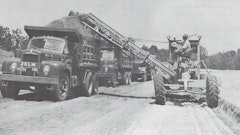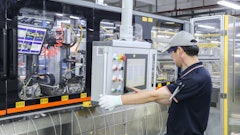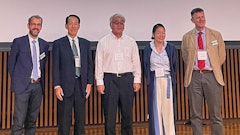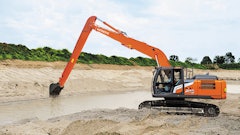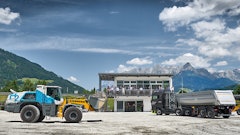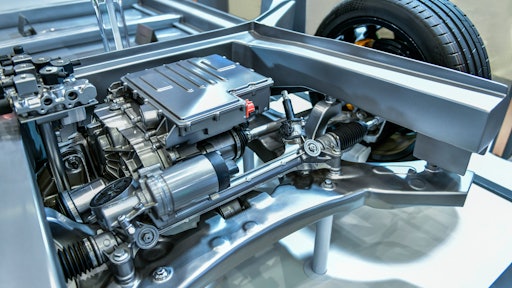
China’s challenge to the West is multifaceted and plays out across geopolitical and industrial domains. Few industrial domains are as much in the public eye as the passenger vehicle industry. Given its importance for the economies of North America, Europe and China, as well as its visibility to end customers, this industry can be seen as a bellwether of the relationships between the West and China. We believe that the lessons and insights from the passenger car industry are applicable to other automotive and industrial sectors as well.
The current understanding of many Western observers is that the West is at a risk of being flooded by highly subsidized Chinese vehicles with corresponding negative implications for local employment, value creation and industrial ecosystems. China, so the charge, is trying to export its way out of a difficult economic situation at home where the lifting of COVID restrictions has not unleashed the forces of the market and driven up growth and consumption sufficiently. This view has merit, as we will further explain in this article.
However, we will also highlight the inherent strength that the Chinese automotive ecosystem has developed and suggest that a full decoupling from the Chinese market may be less-than-optimal from a technology, competition, ecological and consumer point-of-view. Three factors drive competitive advantage for Chinese players and will be discussed in this article: China cost, China speed and China tech.
From an economic point of view, the last decade has been a decade of normalization for China. Coming from breakneck speeds of double-digit growth, the country’s gross domestic product (GDP) is projected to grow by about 4.6% in 2024 and 4.1% in 2025. Clearly, as the economy is now the second largest in the world in nominal terms, this slowdown was to be expected. However, the continued confrontation with the West has taken its toll as well and amplified economic challenges. Global economic risks such as softer and volatile global demand, exchange rate fluctuations and a foreign investment slump have been headwinds. Geopolitical risks around tariffs, sanctions, supply chain de-risking and technology decoupling have been negatives for the Chinese economy. In addition, the politicization of business and changed administrative approach to the economy have increased uncertainty and driven consumer confidence down to record lows. Overall unemployment rates have stabilized at 5%, yet youth unemployment remains stubbornly high at 14% to 15%.
In this environment, the government, as well as entrepreneurs, need to take action. One area of activity is the automotive industry, especially in the light of the energy transition. Over the last decade, the Chinese government subsidized the development of its electric vehicle (EV) industry with incentives to the tune of $250 billion. Support included tax exemptions, purchase incentives and subsidized access to raw materials and capital. Direct subsidies to key industry players amounted to several billion dollars over the last five to six years. Given a soft market at home, both government and companies are also pushing hard to conquer export opportunities. As Figure 1 shows, the export aspirations of Chinese passenger vehicle OEMs are substantial and will catapult these companies to world-leading exporters in the space.  Figure 1. The export aspirations of Chinese passenger vehicle OEMs are substantial and will catapult these companies to world-leading exporters in the space.Roland Berger
Figure 1. The export aspirations of Chinese passenger vehicle OEMs are substantial and will catapult these companies to world-leading exporters in the space.Roland Berger
These growth ambitions come on the back of a solid market share gain in key regions globally. While entry into North America seems unlikely and building a presence in Europe not straightforward, Chinese players are visible in many emerging markets such as South America, Middle East and Africa and Oceania. In the Commonwealth of Independent States (CIS), they command a share of more than 30% taking advantage of Western sanctions against Russia (see Figure 2).
 Figure 2. In the Commonwealth of Independent States (CIS), the Chinese command a share of more than 30% taking advantage of Western sanctions against Russia.Roland Berger
Figure 2. In the Commonwealth of Independent States (CIS), the Chinese command a share of more than 30% taking advantage of Western sanctions against Russia.Roland Berger
China speed is driven by several factors, one of them being reduced platform development cycles. Current Chinese OEMs are operating at 30- to 36-month platform development cycles and are working actively to further shorten the time it takes to bring new vehicles to the market. With shorter development processes, it is easier to react to new technology developments in the market or innovations by competition moving the vehicle closer to “a smartphone on wheels.” Speed in the form of optimized processes, e.g., regarding testing and electrical/electronic (E/E) and software (SW) development for high-voltage batteries, translates into significant cost savings as well, as can be seen in Figure 3.
 Figure 3. Speed in the form of optimized processes, e.g., regarding testing and E&E/SW development for high-voltage batteries translates into significant cost savings.Roland Berger
Figure 3. Speed in the form of optimized processes, e.g., regarding testing and E&E/SW development for high-voltage batteries translates into significant cost savings.Roland Berger
Countering the Chinese challenge by import duties, as has been the case of the U.S. and Europe, certainly helps mitigate some of the advantages that Chinese OEMs have due to strong state support and subsidies. Given the complexity of the situation, especially for European OEMs with large Chinese exposures and in part large Chinese shareholdings, tariffs are only part of the solution. Similar to the challenge posed by Japanese and Korean OEMs in the past, Western OEMs and suppliers will have to learn how to tackle the Chinese players head on. The speed of development will have to increase and organizational complexity must be reduced, e.g., via the intelligent use of artificial intelligence (AI) in research and development (R&D), procurement, supply chain, etc. Efficiency and cost must be at the center of organizations after a prolonged, COVID-induced period of passing cost increases through to the customer. Local manufacturing and technology ecosystems need to be strengthened, e.g., via the Inflation Reduction Act in the U.S., to build local competencies. Strategies for emerging markets need to be revisited to ensure success in these growth markets and ward off Chinese dominance. Partnership with Chinese players should be explored to get access to capabilities. The to-do list is long and unlikely to subside any time soon.
In addition, global volatility requires a constant reflection and adjustment of China-related strategies. The road that executives have to navigate is likely to be windy — flexibility, speed and diligence of execution and the capability to create win-win partnerships will be key to navigate through these challenges successfully.





